Cotton Sustainability Basics
Cotton Sustainability
More sustainable cotton production means using our natural resources—water, land, carbon, and energy—more efficiently. U.S. cotton producers are leading the way in responsible cotton production practices that dramatically reduce water use, land use, soil loss, and energy use while increasing soil health and yield per acre.
Key to these advances in the sustainability of cotton production has been the development of innovative technologies, management systems, and conservation approaches driven by science-based environmental goals and targets. Let’s take a closer look at the issues, progress, prospects, and goals for increased efficiency in the use of these four key natural resources in cotton production:
Water Management
Cotton is not a water-intensive crop. Cotton plants are naturally drought and heat tolerant, and can be grown in regions where the water supply is limited.
Agriculture accounts for about 70% of global water use,1 but cotton production accounts for only about 3% of all water used for crop production.2 In the U.S., 64% of cotton acreage needs no irrigation, as rainfall is sufficient to meet cotton’s water requirements. In most of the other 36%, irrigation is used only during dry spells. In 2018, only about 5% of U.S. cotton land was fully irrigated.3
U.S. cotton growers have made tremendous progress in water stewardship—from 1980 to 2015, the efficiency of irrigation water use increased by 82%.4 Improved sprinkler technologies and laser leveling of fields have reduced water loss.
Water consumption has been reduced by transitioning from surface irrigation to sprinkler or drip irrigation systems and through the implementation of improved water delivery systems and irrigation scheduling tools.
To decide whether and when to irrigate, growers can use technologies such as computer modeling of plant growth and weather, soil moisture probes, and thermal infrared measurements of leaf temperature.
Water Use vs. Water Consumption
To fully understand the impact of cotton production on water resources, it’s important to understand the difference between water use and water consumption.
Water use (or water withdrawal) includes all water that is withdrawn from a watershed, whether or not it is returned to that same watershed.
Water consumption includes only the water that is permanently removed from a given watershed—such as water lost to evaporation or incorporated into a product (such as a cotton plant). This water is not destroyed; it is removed from the original water source, but it re-enters the global water cycle elsewhere.
If we look at water use and water consumption over the life cycle of a typical cotton garment, most of the water consumption is due to the irrigation of cotton plants, but water use in textile and garment manufacturing far exceeds water consumption in agricultural production of cotton.
Metrics & Tools
The environmental impacts of water use and consumption will depend on the environment in which they occur. Metrics and tools have been developed to help assess the impacts of water consumption in various environments, to support science-based approaches to sustainability:
A water footprint measures the amount of freshwater consumed for a given product or service, or by a defined group of consumers. It includes the water consumed from precipitation (green water) and surface waters or groundwater (blue water), plus the water needed to dilute pollutants to safe levels (gray water).
The AWARE method is a life cycle assessment (LCA) measure that compares water availability or scarcity among the locations of interest. It indicates the relative amount of Available WAter REmaining in a watershed for consumption after the demands of humans and aquatic ecosystems have been met, i.e., whether it is above or below the world average.
The Higg Materials Sustainability Index (MSI) is a tool for estimating the “cradle-to-fabric” impact of producing textile materials. It results in a single score, based on equal weighting of four environmental impact categories (climate change, pollution of water with nitrogen and phosphorus, depletion of fossil-based resources, and water scarcity). This score also incorporates a qualitative chemistry score. Though the MSI is widely used by the apparel industry, the method is highly subjective, and its use of a single score oversimplifies comparisons among materials. Notably, the MSI omits some potentially important impacts (such as microplastics pollution), and the impacts it does consider are prioritized equally. Most importantly, it does not consider the entire product life cycle. Using MSI data to publicly compare materials is not allowed, as the methods do not conform to the ISO 14000 comparative LCA standards and guidance.6
Continuing improvements in water-use efficiency are essential for the sustainability of cotton production. Climate change poses an additional challenge, as it brings prolonged droughts and more intense rainstorms, which run off rather than soaking into the soil. Research and development are continuing on technologies to more accurately determine crop water needs, optimally schedule irrigation, improve the precision of water delivery, and reduce water loss. Agricultural use of wastewater and high-salinity drainage water are being explored, to take advantage of cotton’s high salt tolerance. Seed companies also continue to develop more drought-tolerant varieties through traditional breeding or genetic engineering.
Further explore the facts, myths, and measurements around cotton and water in this two-part webinar series:
Demystifying Agricultural Water Management
Cotton & Water Series, Part 1
Dr. Ed Barnes, senior director of Agriculture and Environmental Research at Cotton Incorporated, discusses ongoing research to improve the efficiency of water use in cotton production.
Download Demystifying Agricultural Water Management presentation slides.
Webinar originally played 5/21/20
Understanding Metrics & Use in Industry Tools
Cotton & Water Series, Part 2
Dr. Jesse Daystar, chief sustainability officer at Cotton Incorporated, focuses on how we measure, compare, and communicate water-use impacts.
Download Understanding Metrics & Use in Industrial Tools presentation slides.
Webinar originally played 5/28/20
Land Use & Soil Health
Sustainability in cotton land use requires increased productivity (yield per acre), and productivity depends greatly on soil conservation and soil health. Soil is continually being produced through a lengthy natural process but is continually being lost to erosion through the actions of rain and wind.
Modern production practices enable cotton growers to conserve soil more effectively, while also improving soil health. As a result of improved U.S. crop production and management practices, about half as much land is needed to produce one tonne of cotton as in 1980.7
Productivity gains have greatly reduced the amount
of land needed to produce a tonne of cotton fiber.
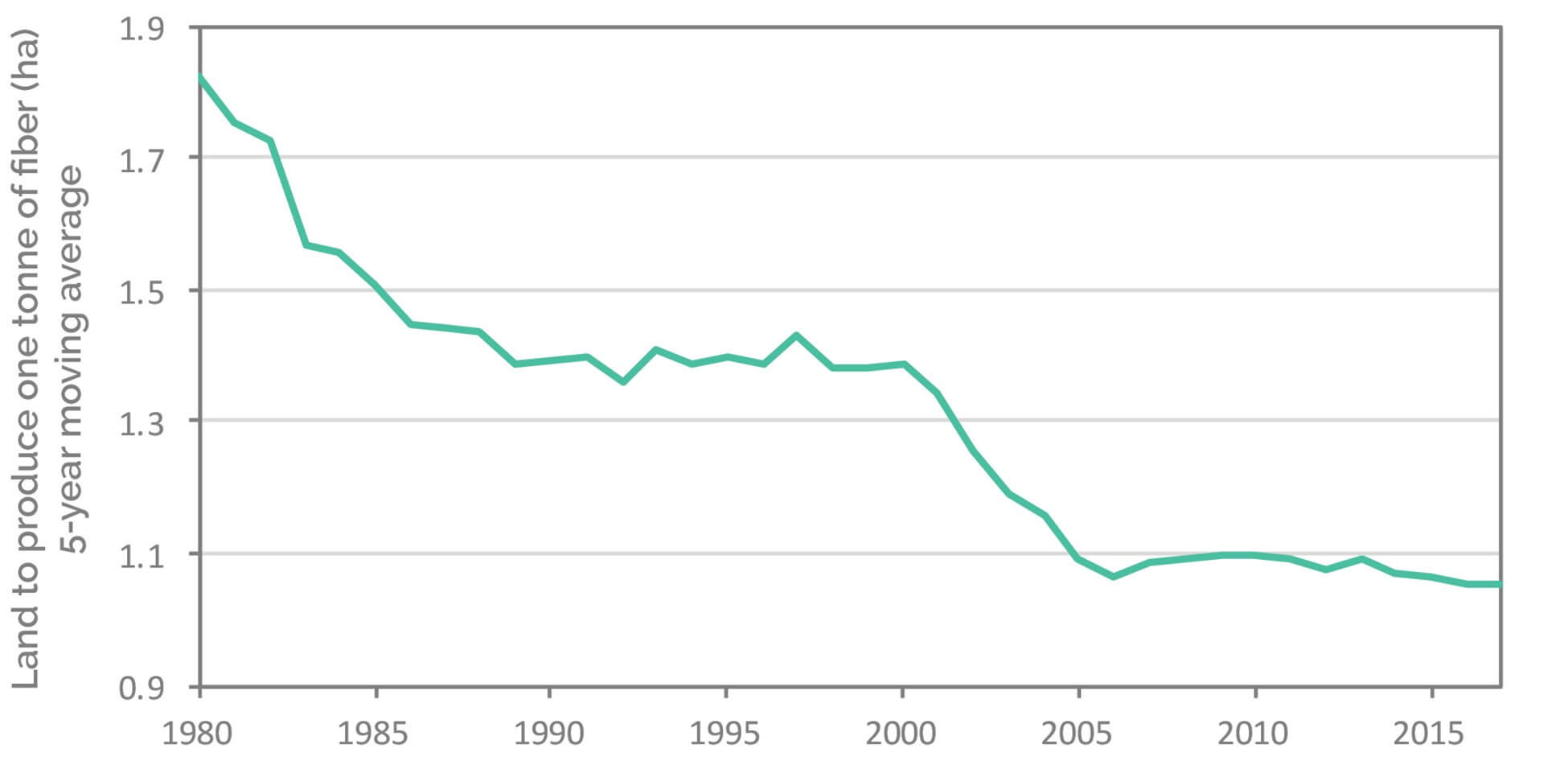
The federal government has played a major role in soil conservation through several USDA programs, including the Conservation Compliance program to minimize soil erosion.8
Federally approved conservation plans help protect highly erodible lands, and USDA’s Natural Resources Conservation Service assists growers in implementing soil conservation practices, such as planting cover crops and windbreaks, contour farming, and conservation tillage (minimizing disturbance of the soil).
Climate Change & Erosion Control
As climate change brings more intense rain events, erosion control becomes even more of a challenge.
Pollution from runoff of insecticides and herbicides has also been reduced through USDA’s boll weevil eradication program, extensive adoption of integrated pest management practices, conservation tillage, and the development of insect-resistant and herbicide-resistant cotton plants.
Over the past 30 years, adoption of no-till farming has reduced soil loss per acre by 37%.4 The development of seed-treatment fungicides and herbicide-tolerant cotton has reduced the need for tilling to control diseases and weeds. Conservation tillage also increases nutrient cycling and availability, as do crop rotation and the use of cover crops. These practices can increase the content of carbon and nitrogen in soil and increase microbial activity, which benefits soil and plant health. One study found that with no-till farming, also growing a cover crop doubled the soil’s carbon content.9 In addition, by reducing runoff, conservation tillage reduces pollution of water by fertilizers and pesticides.
More efficient systems for the delivery of nutrients (primarily nitrogen, phosphorus, and potassium) contribute to improved soil health. The application of excess nutrients results in leaching and runoff, which threaten water quality. Modern technologies to detect and manage crop nutrient needs have made precision agriculture possible—through the use of GPS receivers, multi-spectral imagery, ground-based sensors (for example, to detect variations in soil type), and variable-rate fertilizer applicators, growers can more precisely target the delivery of nutrients to crops.
In a 2013 survey, 74% of southern U.S. cotton producers reported using some type of precision agricultural management.10
The following areas hold promise for further increasing land-use efficiency and soil health:
- Increased use of cover crops for weed control and soil health.
- Research on the chemistry and microbiology of the soil root zone.
- Wider adoption of geospatial and digital technologies to support the precision application of inputs.
- Improvements in plant breeding techniques, including the use of CRISPR gene editing to improve performance and yield.
Further explore the importance and environmental benefits of improved cotton production and management practices in these three webinars:
Cotton & Soil Health: A Solution to Global Challenges
Dr. Cristine Morgan, chief scientific officer at the Soil Health Institute, discusses issues in soil health and the importance of regenerative agriculture management to reduce greenhouse gas emissions, increase carbon storage in the soil, and develop resilience in agricultural systems to counteract the effects of climate change.
Download Cotton & Soil Health presentation slides.
Webinar originally played 7/23/20
Cotton & Science-Based Targets: Industry Progress & Path to Net Zero
Michael Sadowski, an independent consultant at the World Resources Institute, discusses the Science-Based Targets Initiative and its guidance to support companies as they set ambitious science-based targets for reducing greenhouse-gas emissions.
Download Cotton & Science-Based Targets presentation slides.
Webinar originally played 7/30/20
Cotton & the Climate Roadmap: Strategies for the Apparel Industry to Reach Net Zero
Michael Sadowski returns to discuss how the apparel industry can achieve its science-based greenhouse gas reduction targets. Sean Cady, VP of Global Sustainability & Responsible Sourcing at VF Corporation, comments on VF’s current science-based targets and the actions they plan to take to meet their commitments.
Webinar originally played 9/30/20
Carbon Capture & Sequestration
As global focus on climate change increases, so has attention to carbon capture and sequestration, or the process of preventing carbon from entering the atmosphere and storing it safely. Cotton production naturally sequesters carbon in the soil and in the fiber itself, transforming carbon dioxide and sunlight into glucose sugars during the photosynthesis process, some of which are transformed into cellulosic fibers (i.e., cotton lint).
The cotton plant is in fact very efficient at removing CO2 from the atmosphere, and its capacity to store it in the soil and fiber is only increasing. Agricultural innovations like precision fertilization, cover cropping, and no-till management, which is becoming increasingly popular around the world, significantly improve the soil’s carbon and water storage capacity.
Increased adoption of best management practices in cotton production systems—such as no-till practices, which alone can sequester as much as 450 kilograms of soil organic carbon per hectare per year—allow sequestration rates to continue to rise.11 This carbon sequestration can be further enhanced by the use of cover crops, which is also becoming an increasingly frequent practice.12 If all the cotton farms in the world employed conservation tillage techniques, the global cotton acreage would remove emissions equivalent to taking 3.5 million passenger cars off the highways every year!11
Energy Efficiency
The primary energy expenditures in cotton production include fuel for agricultural equipment, electrical energy for ginning, and the energy used to manufacture fertilizers (especially nitrogen fertilizer). Some of the production practices that reduce soil loss and improve soil health, such as no-till farming, site-specific management of inputs, and precision application technologies, also reduce energy expenditures.
From 1980 to 2015, energy use per pound of fiber produced in the U.S. decreased by 54%, and greenhouse gas emissions decreased by 38%, while both yield and total lint production increased.4
Less than half as much energy is needed to produce
a pound of cotton fiber in the U.S. than in 1980.4
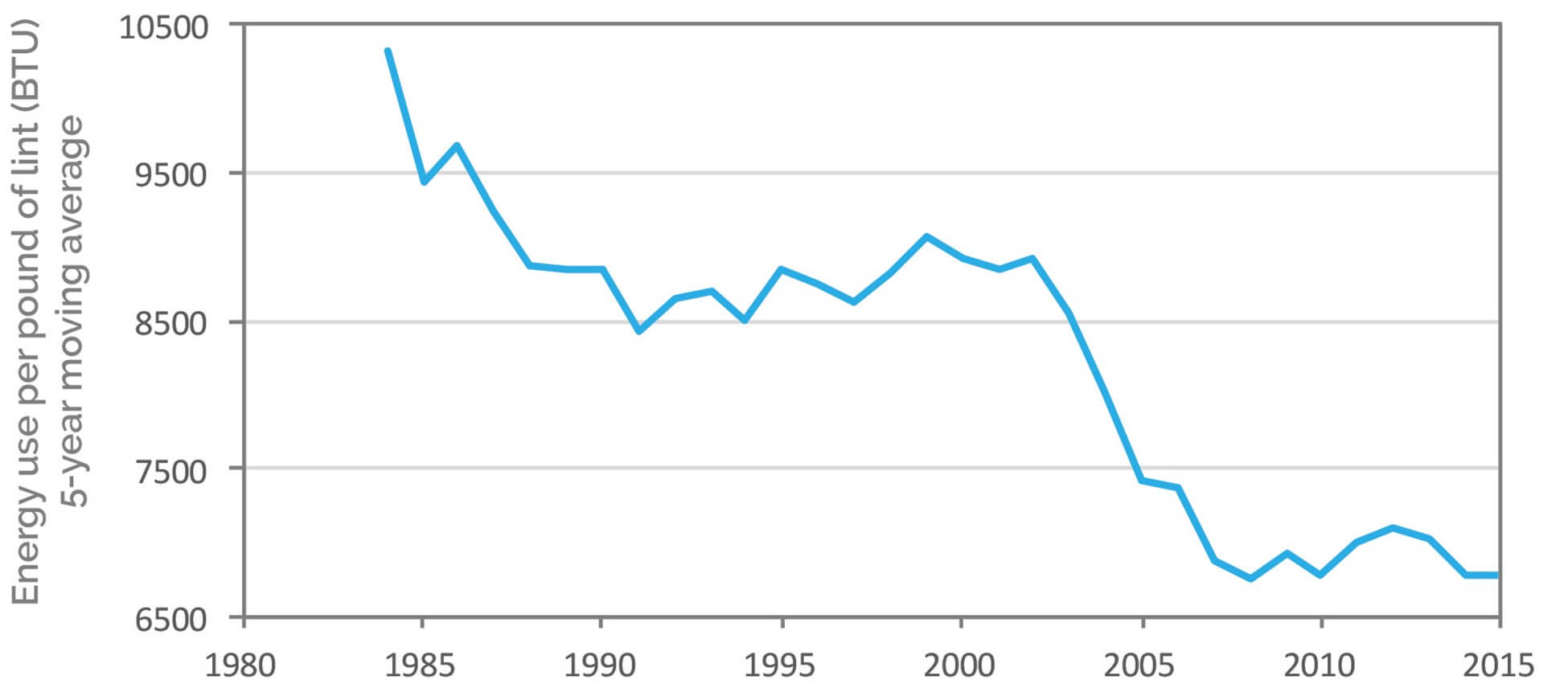
Continuing adoption of conservation tillage practices and improved nitrogen use efficiency (increased lint yield per unit of nitrogen fertilizer applied) will continue to reduce energy use and greenhouse gas emissions in cotton production. Current research seeks to identify how to further improve nitrogen use efficiency—which can be related to application timing, irrigation practices, fertilizer types, weather predictions, or plant genetics—with the goal of improving nitrogen fertilizer decision-support tools. Improved nitrogen use efficiency will decrease nitrous oxide emissions.
Although harvesting and ginning offer little scope for near-term energy savings, promising technologies on the horizon include robotic implements for cotton harvesting and CRISPR gene editing to develop cotton varieties with a weaker attachment of fiber to seed, to reduce the energy required for ginning.
It’s important to note that cotton farming produces not only lint but also cottonseed, which is itself a source of energy. As an oilseed, cottonseed can be converted to biodiesel, and its co-products can be used as feeds for livestock. Potentially, if the conversion efficiency is high enough, energy derived from cottonseed can fully offset or even exceed the energy expenditures of cotton production.
For More Information
1. Food and Agriculture Organization of the United Nations. 2016. Water Withdrawal by Sector, 2010.
2. Hoekstra, A.Y. & A.K. Chapagain. 2007. Water footprints of nations: water use by people as a function of their consumption pattern. Water Resource Management (21)1:35-48.
3. Cotton Incorporated, calculated from data in the USDA Farm and Ranch, Irrigation, and Water Management Survey. 2018.
4. Field to Market. 2016. Cotton. In Environmental and Socioeconomic Indicators for Measuring Outcomes of On-Farm Agricultural Production in the United States. Third edition.
5. Barnes, E.M., B. T. Campbell, G. Vellidis, W. M. Porter, J. O. Payero, B. G. Leib, R. Sui, D. K. Fisher, S. Anapalli, P. D. Colaizzi, J. P. Bordovsky, D. O. Porter, S. Ale, J. Mahan, S. Taghvaeian, and K. R. Thorp. 2020. Forty years of increasing cotton’s water productivity and why the trend will continue. Applied Engineering in Agriculture Vol. 36(4): 457-478 2020 American Society of Agricultural and Biological Engineers ISSN 0883-8542 https://doi.org/10.13031/aea.13911
6. Sustainable Apparel Coalition. 2020. Higg Index Communication Guidelines. Beta release.
7. Cotton Incorporated, calculated from data in National Agricultural Statistics Service Quick Stats: Cotton. 2020.
8. USDA Natural Resources Conservation Service – Conservation Compliance
9. Causarano, H.J., A.J. Franzluebbers, D.W. Reeves & J.N. Shaw. 2006. Soil organic carbon sequestration in cotton production systems of the southeastern United States: a review. Journal of Environmental Quality 35:1374-1383.
10. Zhou, X., B.C. English, J.A. Larson, D.M. Lambert, R. K. Roberts, C.N Boyer, M. Velandia, L.L. Falconer & S.W. Martin. 2017. Precision farming adoption trends in the southern U.S. Journal of Cotton Science 21:143-155.
11. Franzluebbers, A. J. (2010). Achieving Soil Organic Carbon Sequestration with Conservation Agricultural Systems in the Southeastern United States. Soil Science Society of America Journal, 74(2), 347–357. https://doi.org/10.2136/sssaj2009.0079
12. Cover Crop Strategies. (2019). Census of Ag: Cover Crop acres in U.S. growing 8% per year. Cover Crop Strategies. https://www.covercropstrategies.com/articles/178-census-of-ag-cover-crop-acres-in-us-growing-8-per-year.
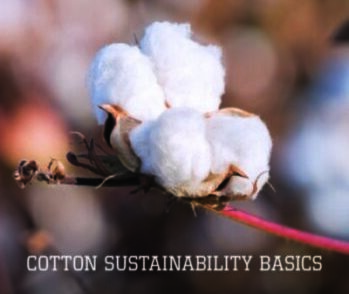

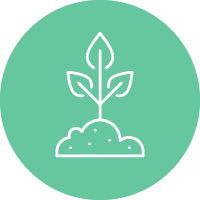
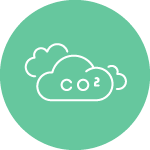


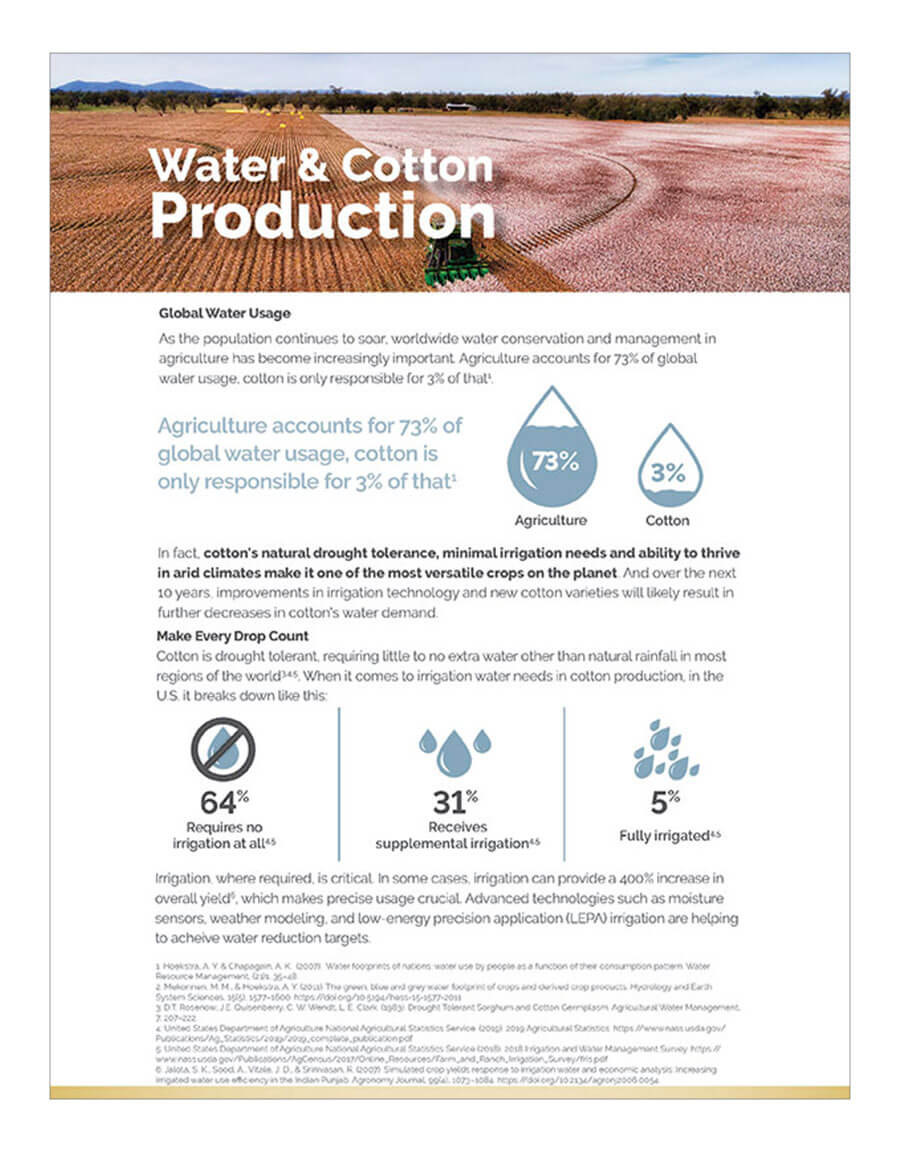 Water & Cotton Production
Water & Cotton Production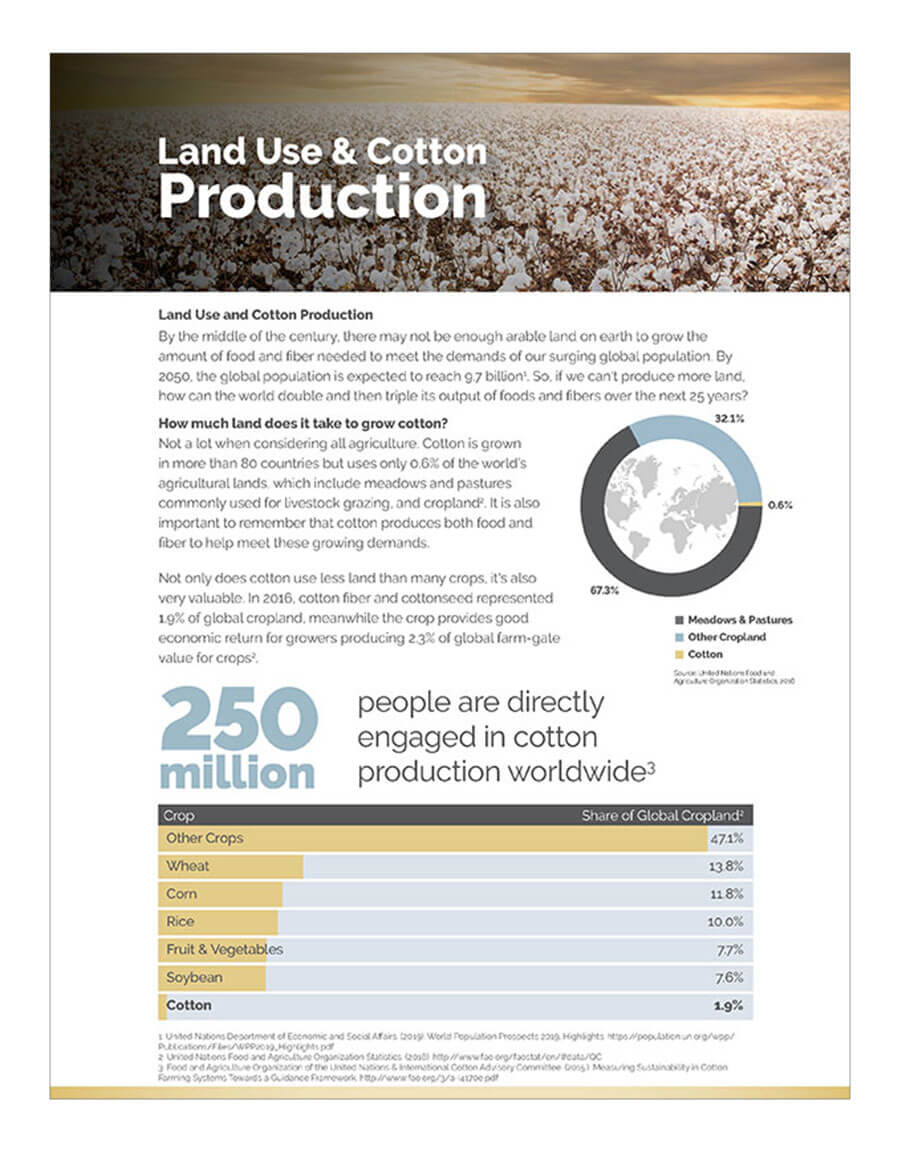 Land Use & Cotton Production
Land Use & Cotton Production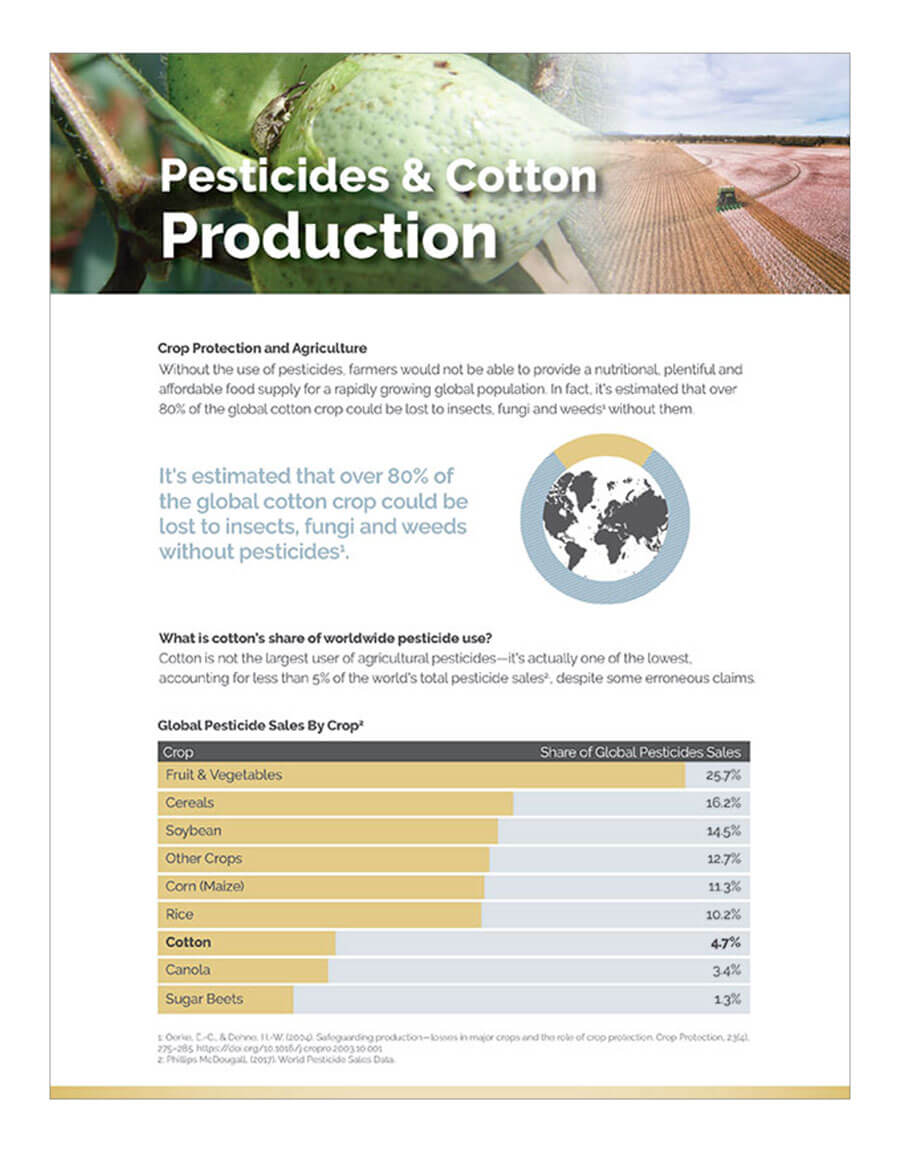 Pesticides & Cotton Production
Pesticides & Cotton Production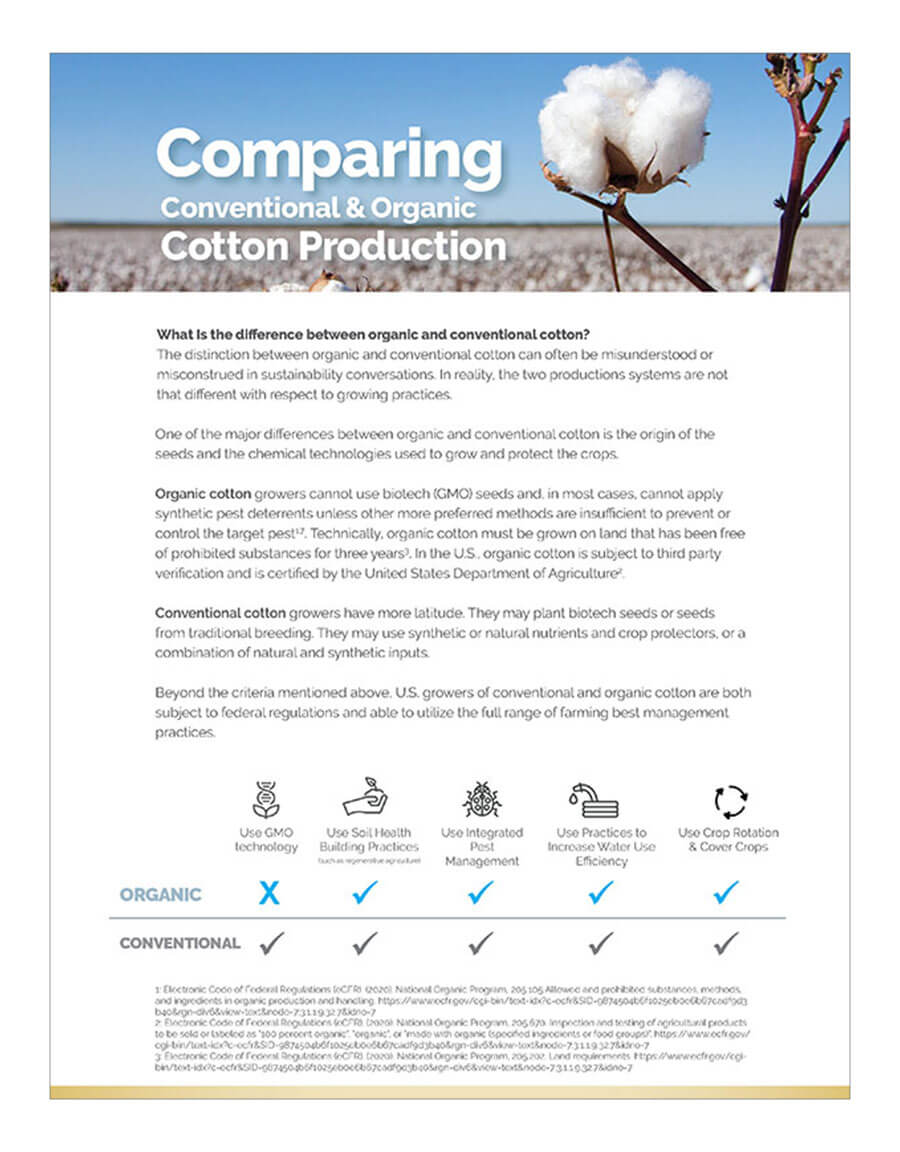 Comparing Conventional & Organic Cotton Production
Comparing Conventional & Organic Cotton Production Climate Change & Cotton Production
Climate Change & Cotton Production

